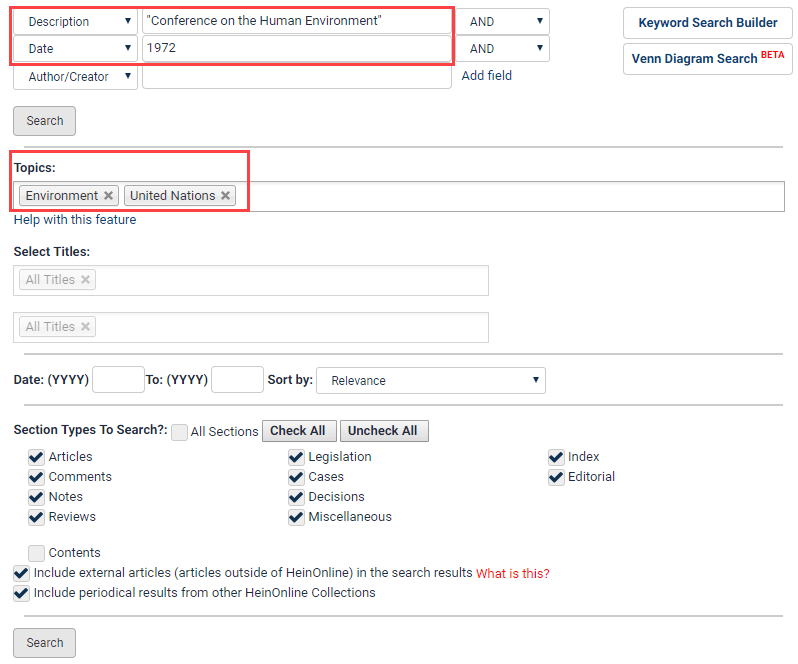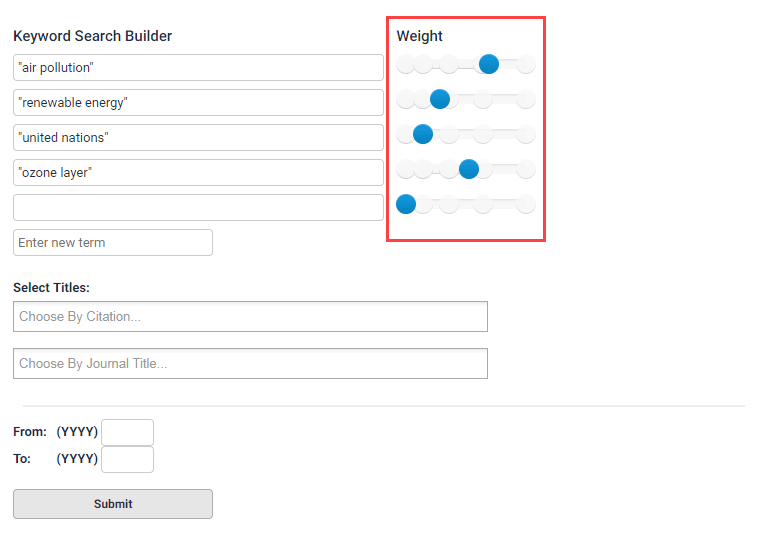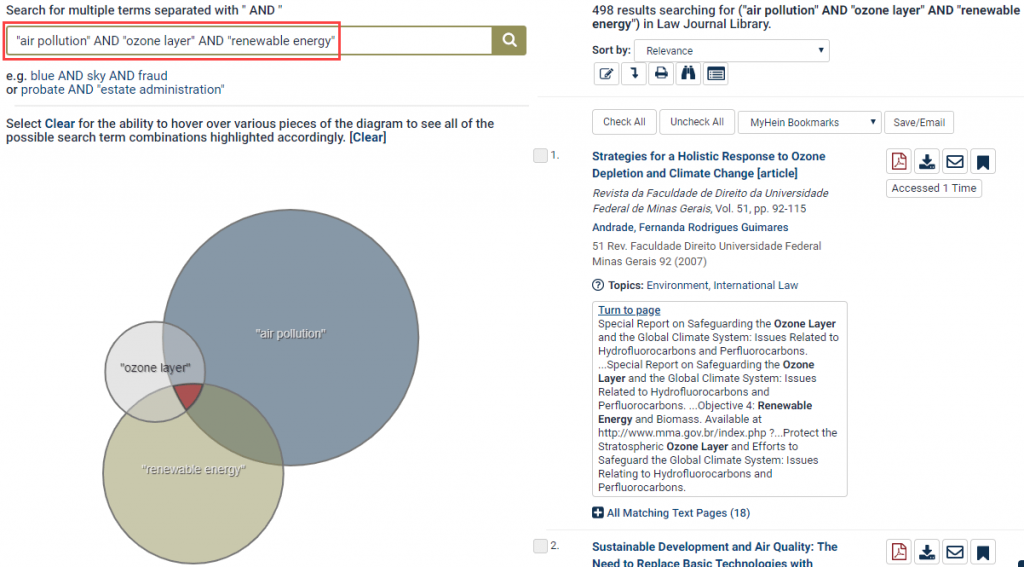June 5th is World Environment Day, established by the United Nations in 1974. An international platform for environmental awareness, World Environment Day is officially celebrated in a different host city each year with activities centered around a particular theme. Discover more about World Environment Day, its origins, and the theme of the 2019 celebrations—air pollution—with HeinOnline.
Before We Get Started:
Don’t miss out! Make sure you have the databases we’ll be mentioning in this post. Follow the links below to start a trial today.
- Law Journal Library – Now contains more than 2,700 journals!
- United Nations Law Collection
- U.S. Treaties and Agreements Library
- Session Laws Library
Starting the Conversation
In 1972, the United Nations launched a global discussion about environmental issues with its Conference on the Human Environment, held from June 5th-16th in Stockholm, Sweden. The first major environmental conference, the Conference on the Human Environment sought to develop a united international position with regard to protecting and enhancing the Earth’s environment.
The Conference was attended by 113 member states of the United Nations, as well as members from specialized UN agencies, and organized itself into three main committees charged with discussing the environmental issues on the Conference’s agenda. On the last day of the gathering, the Conference adopted the Declaration of the United Nations Conference on the Human Environment (the Stockholm Declaration) which established 26 principles concerning the environment, an action plan with 109 recommendations, and a resolution. One of those recommendations included the institution of a World Environment Day to encourage awareness and spark action for the protection of the environment. In December of the same year, the United Nations adopted a resolution to officially designate World Environment Day as each June 5th.
View the Stockholm Declaration in HeinOnline’s Law Journal Library. From the database home page, click on the blue hyperlink entitled Advanced Search under the main search bar. Change two of the drop-down menus next to the first three search boxes to read Description and Date. Next to Description, type “Conference on the Human Environment”. Next to Date, type “1972”.
Add Topics in any Advanced Search to better refine the results. For this search, let’s add the topics of “Environment” and “United Nations.” Click the search button to view three results: the declaration, the action plan, and the resolution.

#BeatAirPollution with HeinOnline
Since the first World Environment Day in 1974, each annual celebration has adopted a pressing environmental concern as its theme. This year’s theme—#BeatAirPollution—was chosen by the 2019 host, China, to encourage the reduction of man-made air pollution and its detrimental impact on global warming and human health.
In his message regarding this year’s World Environment Day, UN Secretary-General António Guterres illustrates the consequences of air pollution, some of which include:
- Nine out of ten people worldwide are exposed to polluted air, lowering life expectancy and damaging economies around the world
- Air pollution kills 7 million each year, causes long-term health problems, and reduces cognitive development in children
- Air pollution costs societies more than $5 trillion every year
- Pollutants from diesel engines and burning trash, like black carbon, are causing global warming and are extremely harmful when inhaled
The Secretary-General implores people worldwide to know their enemy when it comes to air pollution. With HeinOnline, users can not only know the enemy but also see first-hand how the world is attempting to face it.
To start, discover some of the most important international laws relating to air pollution. These agreements govern the emission of air pollutants into transboundary air space to protect human health and limit climate change.
- Convention on Long-Range Transboundary Air Pollution (LRTAP) – 1979
- Vienna Convention for the Protection of the Ozone Layer – 1985
- Montreal Protocol on Substances that Deplete the Ozone Layer – 1987
- U.S.-Canada Air Quality Agreement – 1991
- Framework Convention on Climate Change (UNFCCC), including the Kyoto Protocol in 1997
After catching up on those important documents, utilize HeinOnline’s unique natural language processing, machine learning, and research tools to discover related legislation, journal articles, books, and more. The More Like This, Keyword Search Builder, and Venn Diagram Search features are valuable tools for discovering relevant content throughout HeinOnline’s databases.
More Like This
To use the More Like This tool, let’s choose one of the treaties listed above, the Convention on Long-Range Transboundary Air Pollution (LRTAP). From the treaty page, click on the More Like This button to the right above the article. Users will be redirected to “interesting words” in the article, determined by an algorithm, and can adjust the terms and their respective weights to narrow the search.

Keyword Search Builder
Try the Keyword Search Builder in several databases by navigating to the Advanced Search option, hyperlinked in blue under the main search bar. For example, enter the Law Journal Library and choose the Keyword Search Builder to the right-hand side. Insert terms relevant to the topic and adjust the boost factors to allocate their respective weights.

Venn Diagram Search
Finally, use HeinOnline’s brand new Venn Diagram Search to visualize the relationship between the terms and the number of results they yield in various combinations. Users can perform Venn Diagram searches within any database, or across all of their subscribed databases. The Venn Diagram Search can be found in the same way as the Keyword Search Builder, in the Advanced Search option under the main search bar.
Let’s use this feature in the Law Journal Library. From the home page, click on the Venn Diagram Search within the Advanced Search feature. Enter two or more terms or phrases into the search bar, each separated by the Boolean operator “AND” (e.g. “air pollution” AND “ozone layer” AND “renewable energy”).
Visualize the different combinations of the terms with the Venn Diagram that appears, and use the results to better refine the search.

Armed with the knowledge of air pollution and related topics, feel confident in educating your friends and advocating for better environmental protections. While you’re at it, help by making some of these small changes suggested by the United Nations.
Be a well-informed agent of change. For more blogs on hot topics, click the Subscribe button on the upper right-hand side of this post.
Don’t forget to connect with HeinOnline on our social media platforms: Facebook, Twitter, Instagram and YouTube.



